Modular Raised Beds Compared to Traditional Gardening Techniques in 2025
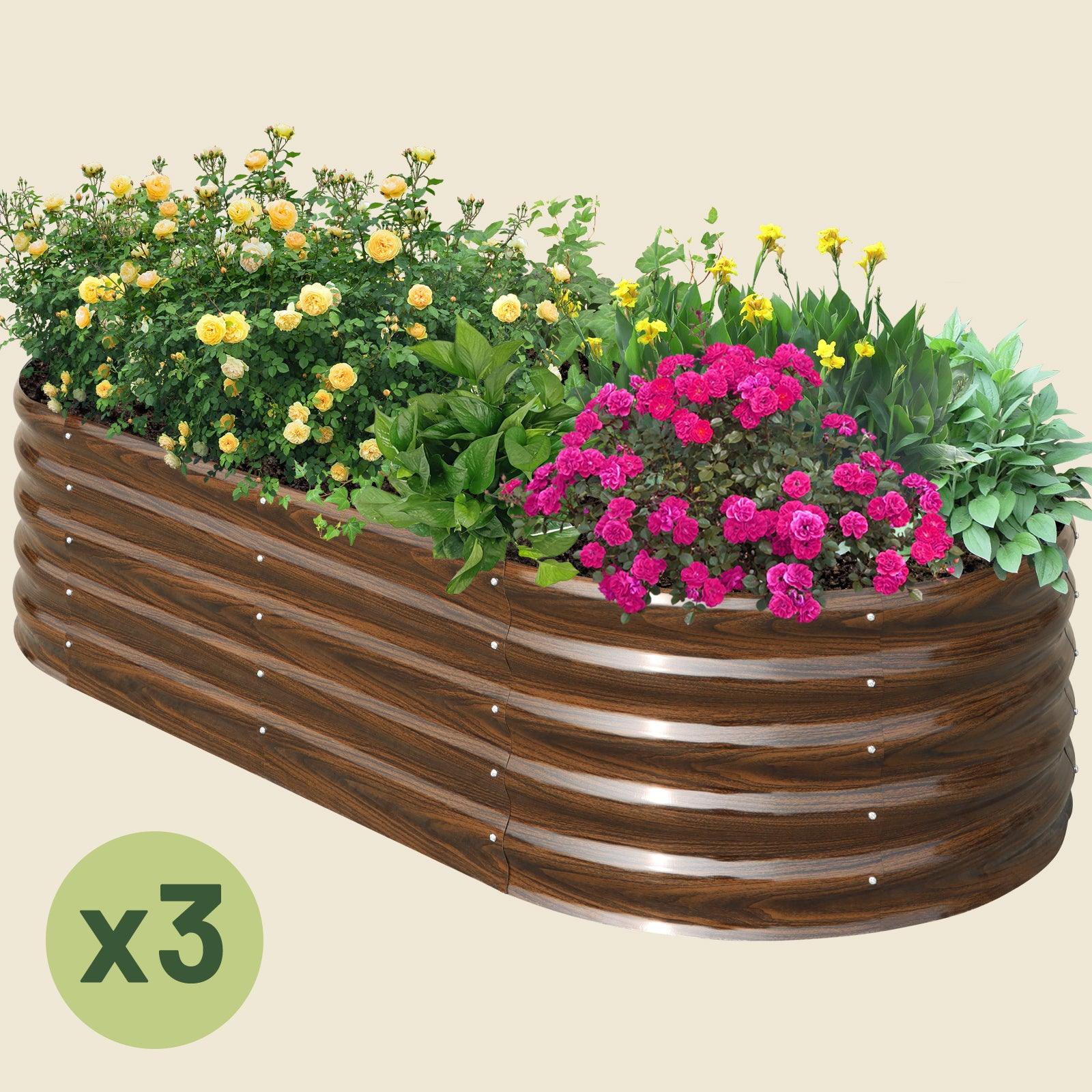
Gardening in 2025 offers you exciting choices, whether you prefer modular raised beds or traditional methods. Modular raised beds provide convenient accessibility and allow you to control soil quality, ensuring optimal conditions for plant growth. These systems also warm up faster in spring and retain heat longer in fall, extending your growing season. You can plant earlier, harvest later, and enjoy higher productivity.
Traditional gardening, on the other hand, connects you to the earth directly. It works well for large plots and supports biodiversity. Both methods contribute to sustainable gardening, but modular systems like a modular metal raised garden bed reduce resource use and improve efficiency.
Key Takeaways
Modular raised beds are flexible and fit in small spaces.
They let you control soil better by mixing your own.
Traditional gardening uses the ground and costs less for big areas.
Smart watering tools in modular beds save time and water.
Think about your space, money, and goals before deciding.
What Are Modular Raised Beds and Traditional Gardening?
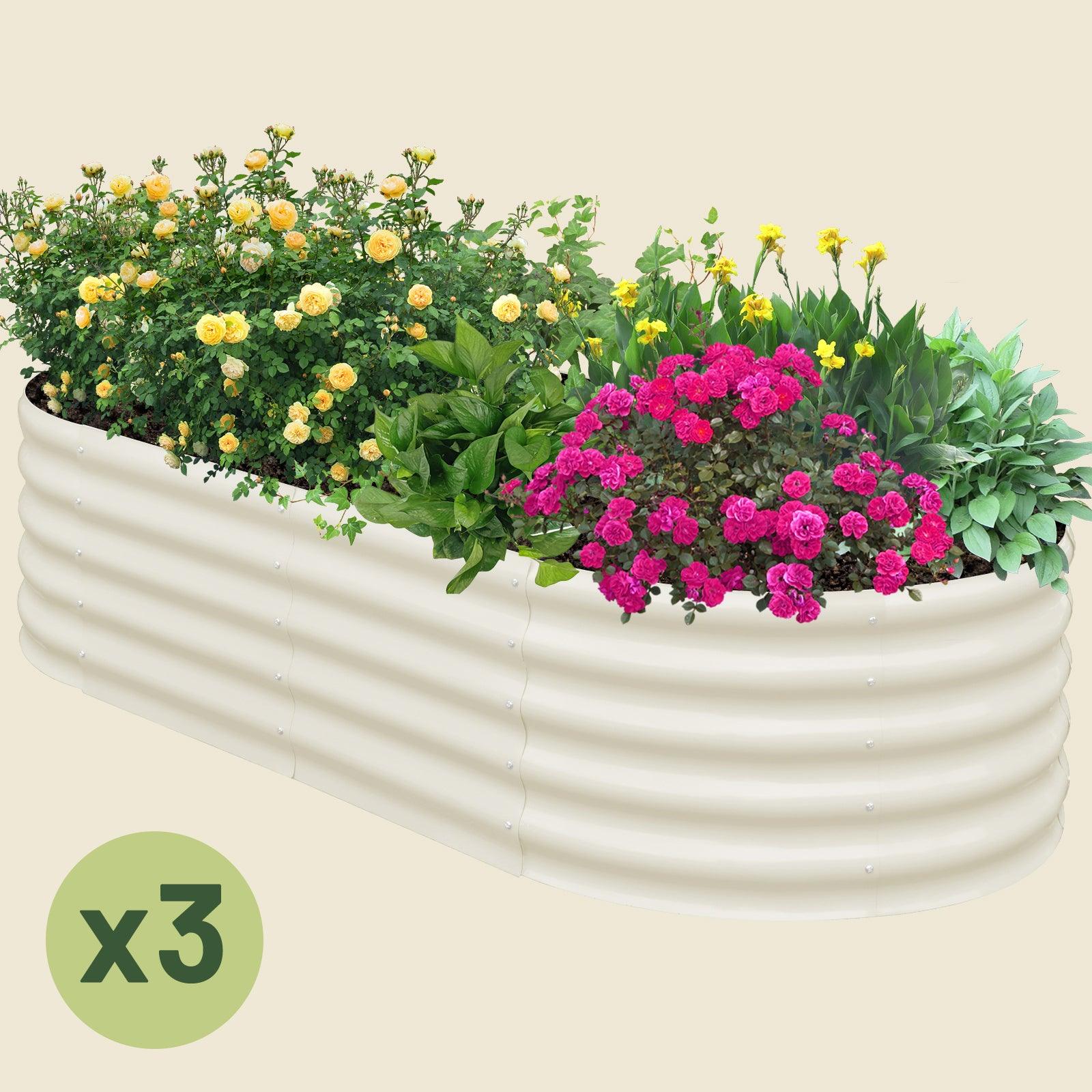
Defining Modular Raised Beds
Key features of modular raised beds
Modular raised beds are elevated gardening structures designed to simplify and enhance your gardening experience. These beds allow you to create a curated soil mix, making them perfect for areas with poor native soil. Unlike traditional planters, modular systems prevent soil compaction and improve drainage, which leads to healthier plants. You can place them on patios, driveways, or other unconventional spaces, offering unmatched flexibility.
Another key feature is their minimal preparation. You can layer materials directly on existing soil without extensive digging. This saves time and effort compared to traditional planters, which often require significant groundwork. Modular raised beds also warm up faster in spring and retain heat longer in fall, extending your growing season.
How modular systems like the SnugNiture modular metal raised garden bed work
The SnugNiture modular metal raised garden bed exemplifies the benefits of modular systems. Its galvanized steel construction ensures durability while remaining lightweight for easy handling. The modular design allows you to assemble and reconfigure the layout to suit your gardening needs. You can create a single large bed or multiple smaller ones, depending on your space and preferences.
This system also prioritizes safety and sustainability. Rounded corners and butterfly-shaped cap nuts protect your hands and plants. The eco-friendly materials ensure no harmful toxins leach into the soil, allowing you to grow clean, healthy crops. With SnugNiture, you can enjoy a gardening solution that combines practicality with environmental responsibility.
Understanding Traditional Gardening
Characteristics of traditional gardening techniques
Traditional gardening involves planting directly in the ground, connecting you to the earth in a natural way. This method has evolved over centuries, shaped by cultural practices and local environments. Traditional planters often rely on native soil, which can vary in quality and require amendments to support plant growth.
Community collaboration plays a significant role in traditional gardening. Many techniques are passed down through generations, reflecting spiritual connections and sustainable practices. Traditional planters often integrate local resources, such as compost or mulch, to enrich the soil and maintain biodiversity.
Common practices in traditional gardening
Traditional gardening practices include preparing the soil through tilling or digging, planting seeds or seedlings directly into the ground, and using natural fertilizers like compost. Crop rotation and companion planting are common strategies to maintain soil health and deter pests. Traditional planters often rely on manual labor for tasks like weeding, watering, and harvesting.
These methods are well-suited for large plots of land, where you can grow a variety of crops. However, they require consistent effort and may face challenges like soil erosion or pest infestations. Despite these challenges, traditional gardening remains a timeless approach that fosters a deep connection to nature.
Comparing Benefits and Drawbacks
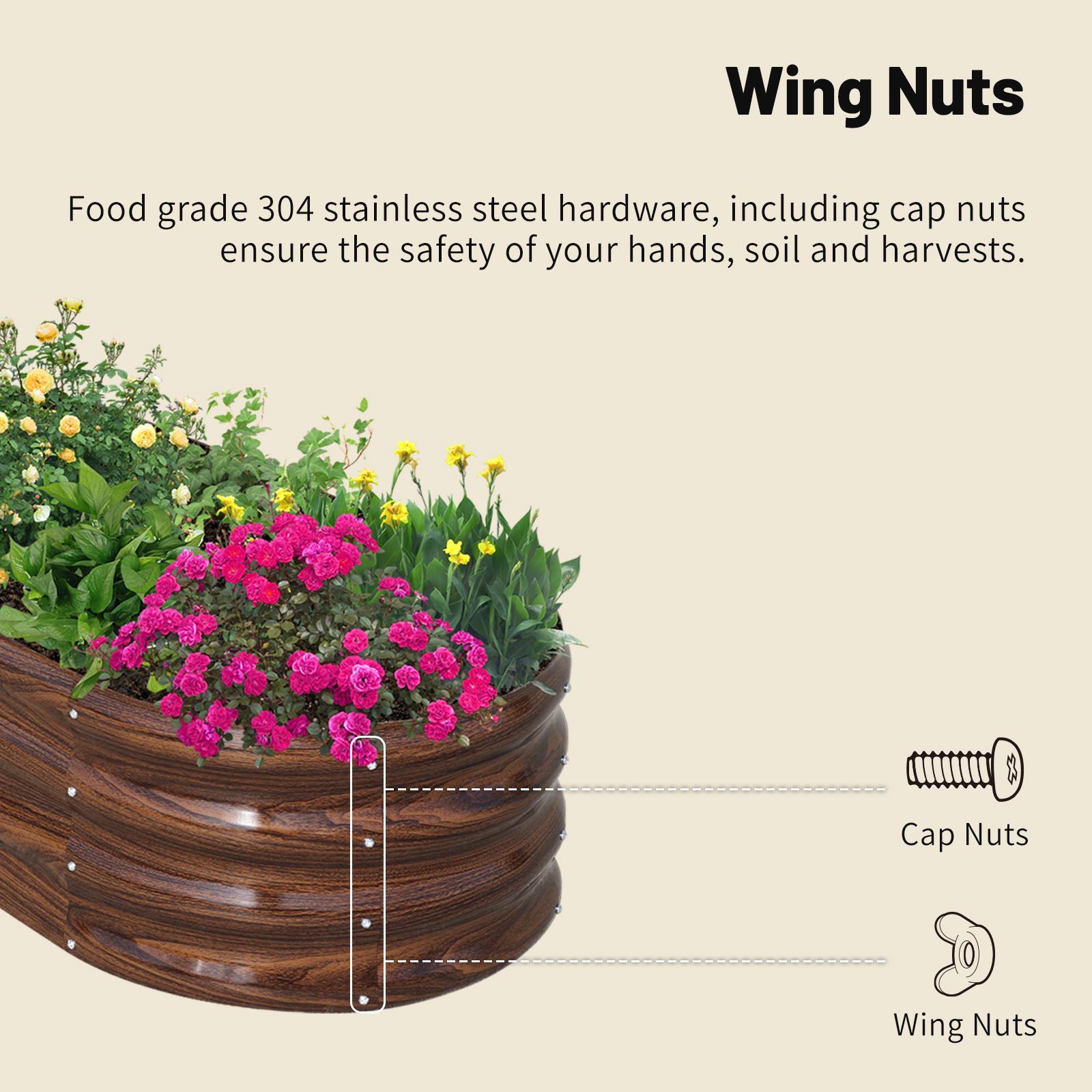
Advantages of Modular Raised Beds
Space efficiency and flexibility
Modular raised beds offer unmatched flexibility and customization for your gardening needs. You can place them on patios, balconies, or even driveways, making them ideal for urban or small-space gardening. These beds maximize space by eliminating gaps between rows, allowing you to grow more plants in limited areas. Their customizable shapes and sizes let you optimize irregular or compact gardens. Additionally, raised beds support intensive planting techniques, such as square-foot gardening, which increases yield per square foot. The depth of these beds promotes deep root systems, ensuring healthier plants compared to traditional ground planting.
Easier soil management and pest control
With modular raised beds, you gain complete control over soil quality. You can create a custom soil mix tailored to your plants, blending compost, organic matter, and soil amendments. This level of flexibility and customization ensures optimal conditions for plant growth. Unlike traditional gardening, where native soil may have deficiencies or contamination, raised beds allow you to avoid these challenges. They also improve drainage, reducing the risk of waterlogging. Elevated designs make it harder for pests to access your plants, offering a natural form of pest control.
Disadvantages of Modular Raised Beds
Higher upfront costs
While modular raised beds provide many benefits, they come with higher initial costs. You need to invest in materials like galvanized steel or wood, which can be expensive. Additionally, purchasing soil and amendments adds to the overall expense. However, these costs often pay off in the long run through improved yields and reduced maintenance.
Potential limitations for large-scale gardening
Modular raised beds may not be the best choice for large plots of land. Their size and structure limit the number of plants you can grow compared to traditional gardening. Expanding a modular system to cover a large area can become costly and labor-intensive. For large-scale projects, traditional methods often prove more practical.
Advantages of Traditional Gardening
Cost-effectiveness and simplicity
Traditional gardening is a budget-friendly option. You can start with minimal investment, as there’s no need for raised structures or extensive soil amendments. The main expenses include seeds and basic tools, making this method accessible for gardeners on a tight budget. By using native soil and natural fertilizers like compost, you can reduce costs further. This simplicity allows you to focus on the joy of gardening without financial strain.
Better suited for large plots of land
If you have a large plot of land, traditional gardening offers significant advantages. It utilizes existing soil, which you can enhance with compost to create a thriving ecosystem. The unlimited space allows crops to spread, supporting larger plants and diverse layouts. Once established, traditional gardens often require less maintenance. Healthy plants naturally suppress weeds and retain moisture, reducing your workload. This method also minimizes the environmental impact by avoiding the need for additional materials.
Disadvantages of Traditional Gardening
Challenges with soil quality and pests
Traditional gardening often relies on native soil, which can present several challenges. The quality of the soil in your area may vary, and it might lack the nutrients your plants need to thrive. You may need to invest time and effort in testing and amending the soil with compost or fertilizers. Without these improvements, plants may struggle to grow or produce healthy yields.
Pests can also become a significant issue in traditional gardens. Since plants grow directly in the ground, they are more accessible to insects, rodents, and other pests. You might find yourself dealing with recurring infestations that damage your crops. Unlike modular raised beds, traditional gardens lack natural barriers, making it easier for pests to invade. Managing these problems often requires additional resources, such as organic pest control methods or physical barriers like fencing.
Tip: Regularly rotating crops and planting pest-repellent companion plants can help reduce pest problems in traditional gardens.
Labor-intensive maintenance
Traditional gardening demands a lot of physical effort. You need to prepare the soil by digging or tilling, which can be exhausting. Weeding is another constant task because traditional gardens lack built-in weed barriers. You’ll need to remove weeds frequently to prevent them from competing with your plants for nutrients and water.
Working at ground level adds to the physical strain. Tasks like planting, weeding, and harvesting require bending, kneeling, or squatting. These activities can be particularly challenging if you have mobility issues or are older. The repetitive motions involved in maintaining a traditional garden can lead to fatigue or discomfort over time.
Traditional gardens require frequent weeding due to the absence of weed barriers.
Gardening at ground level involves bending and kneeling, which can be strenuous.
Note: Using tools like kneeling pads or ergonomic gardening tools can make traditional gardening less physically demanding.
Advancements in Modular Gardening Technology in 2025
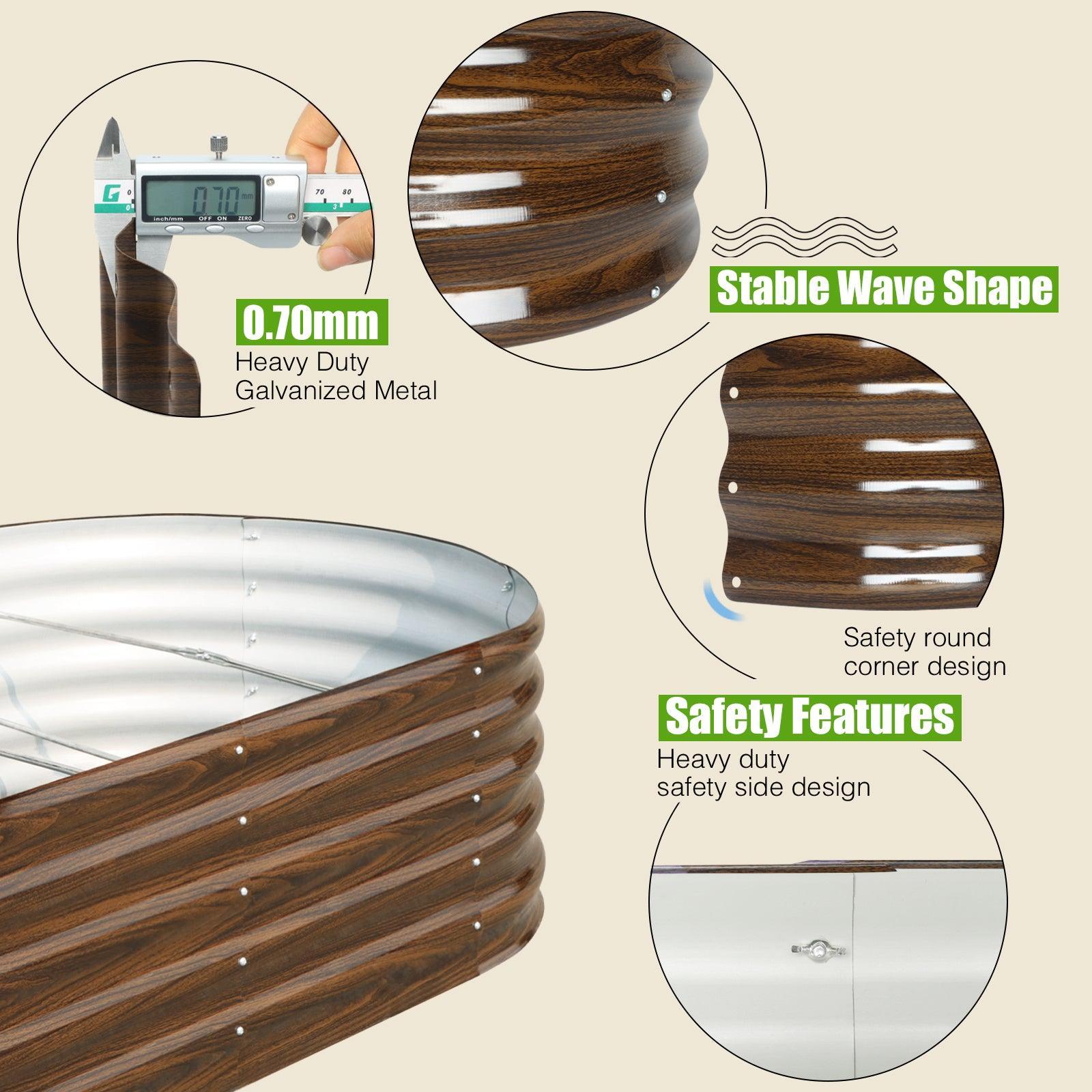
Innovations in Modular Bed Design
Smart irrigation systems
Smart irrigation systems have revolutionized modular gardening in 2025. These systems use sensors to monitor soil moisture levels and automate watering schedules. You no longer need to guess when to water your plants. Instead, the system ensures that your modular planters receive the right amount of water at the right time. This prevents overwatering, which can lead to root rot, and under-watering, which stresses plants. By optimizing water usage, smart irrigation systems make your gardening more efficient and sustainable. They also save you time, allowing you to focus on other aspects of your garden.
Eco-friendly materials and modularity in products like the SnugNiture modular metal raised garden bed
Eco-friendly materials have become a cornerstone of modular gardening. Products like the SnugNiture modular metal raised garden bed use galvanized steel, which offers durability and longevity. These materials resist rust and wear, ensuring your modular planters last for years. Unlike wooden beds, they do not require timber, helping conserve forests. Many modular systems, including SnugNiture, use recycled materials, reducing environmental impact. This approach aligns with sustainability goals by minimizing waste and promoting resource conservation. Modular designs also allow you to reconfigure your garden layout, adapting to your changing needs.
Integration of Technology
IoT-enabled gardening tools
IoT technology has transformed modular gardening by integrating smart tools. Soil moisture sensors and smart greenhouse systems now work seamlessly with modular planters. These tools collect real-time data and automate processes like irrigation. You can monitor your garden remotely using a smartphone app, ensuring optimal conditions for plant growth. IoT systems also reduce food waste by improving resource management. Studies show that IoT applications in agriculture have cut food waste by up to 15%. This technology enhances the efficiency and sustainability of your modular gardening setup.
AI-driven planting recommendations
AI-driven tools provide personalized planting recommendations for your modular planters. These systems analyze factors like soil quality, weather patterns, and plant compatibility. You receive tailored advice on what to plant and when to plant it. This ensures higher yields and healthier crops. AI also helps you plan crop rotations, preventing soil depletion. By using AI, you can make informed decisions that maximize the potential of your modular metal raised garden bed. This technology simplifies gardening, making it accessible even for beginners.
Environmental and Sustainability Considerations
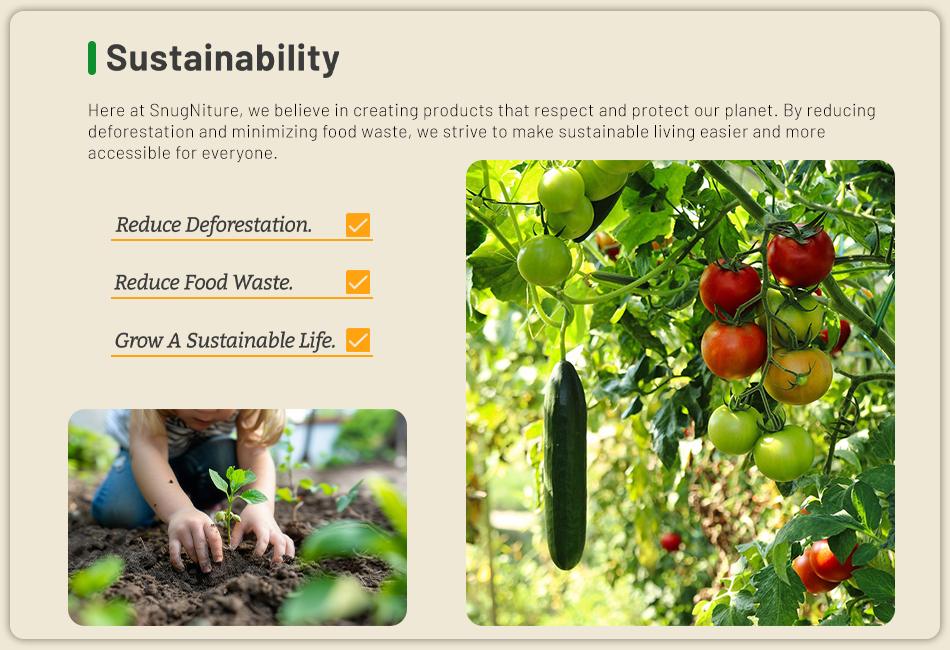
Sustainability of Modular Raised Beds
Reduced water usage
Modular raised beds help you conserve water while maintaining healthy plants. These systems often incorporate self-watering features and drip irrigation. Water reaches the roots directly, minimizing runoff and evaporation. This targeted approach reduces waste and ensures plants receive the moisture they need. Raised beds also allow you to control soil composition, which improves water retention. By using these methods, you can lower water consumption compared to traditional gardening.
Self-watering systems and drip irrigation enhance water efficiency.
Precise water delivery reduces runoff and prevents overwatering.
Tip: Pairing modular beds with smart irrigation systems can further optimize water use, saving time and resources.
Use of recycled and sustainable materials, as seen in the SnugNiture modular metal raised garden bed
Modular raised beds often use eco-friendly materials, making them a sustainable choice. For example, the SnugNiture modular metal raised garden bed features galvanized steel, which is durable and recyclable. This reduces the need for new resources and minimizes waste. Many modular systems also incorporate recycled aluminum, helping conserve forests by avoiding timber use. In contrast, traditional wooden beds may rely on deforestation and treated lumber, which can introduce harmful chemicals into the soil.
Recycled aluminum and steel promote sustainability.
Modular systems reduce reliance on deforestation and harmful materials.
Note: When choosing materials, consider their environmental impact, including how far they traveled and the methods used for production.
Environmental Impact of Traditional Gardening
Soil erosion and water consumption
Traditional gardening can lead to soil erosion if not managed carefully. Over-tilling and excessive soil disturbance expose the ground to wind and rain, causing valuable topsoil to wash away. Removing natural vegetation for planting also increases erosion risks. To combat this, you can use techniques like planting groundcover or building retaining walls to stabilize the soil. Additionally, traditional gardening often consumes more water due to inefficient irrigation methods like sprinklers, which result in significant runoff.
Over-tilling and vegetation removal increase erosion risks.
Retaining walls and groundcover plants help stabilize soil.
Sprinklers lead to higher water consumption and runoff.
Tip: Rotate crops and minimize soil disturbance to reduce erosion and improve soil health.
Potential for biodiversity support
Traditional gardening supports biodiversity when done thoughtfully. By planting a variety of crops and incorporating native plants, you create habitats for pollinators and other beneficial organisms. Companion planting can also attract helpful insects while deterring pests. This approach fosters a balanced ecosystem, which benefits your garden and the surrounding environment. However, improper practices, such as monocropping, can harm biodiversity and deplete soil nutrients.
Diverse crops and native plants attract pollinators.
Companion planting promotes a balanced ecosystem.
Monocropping may reduce biodiversity and soil health.
Note: Encourage biodiversity by planting flowers and shrubs that support local wildlife.
Choosing the Right Method for Your Needs
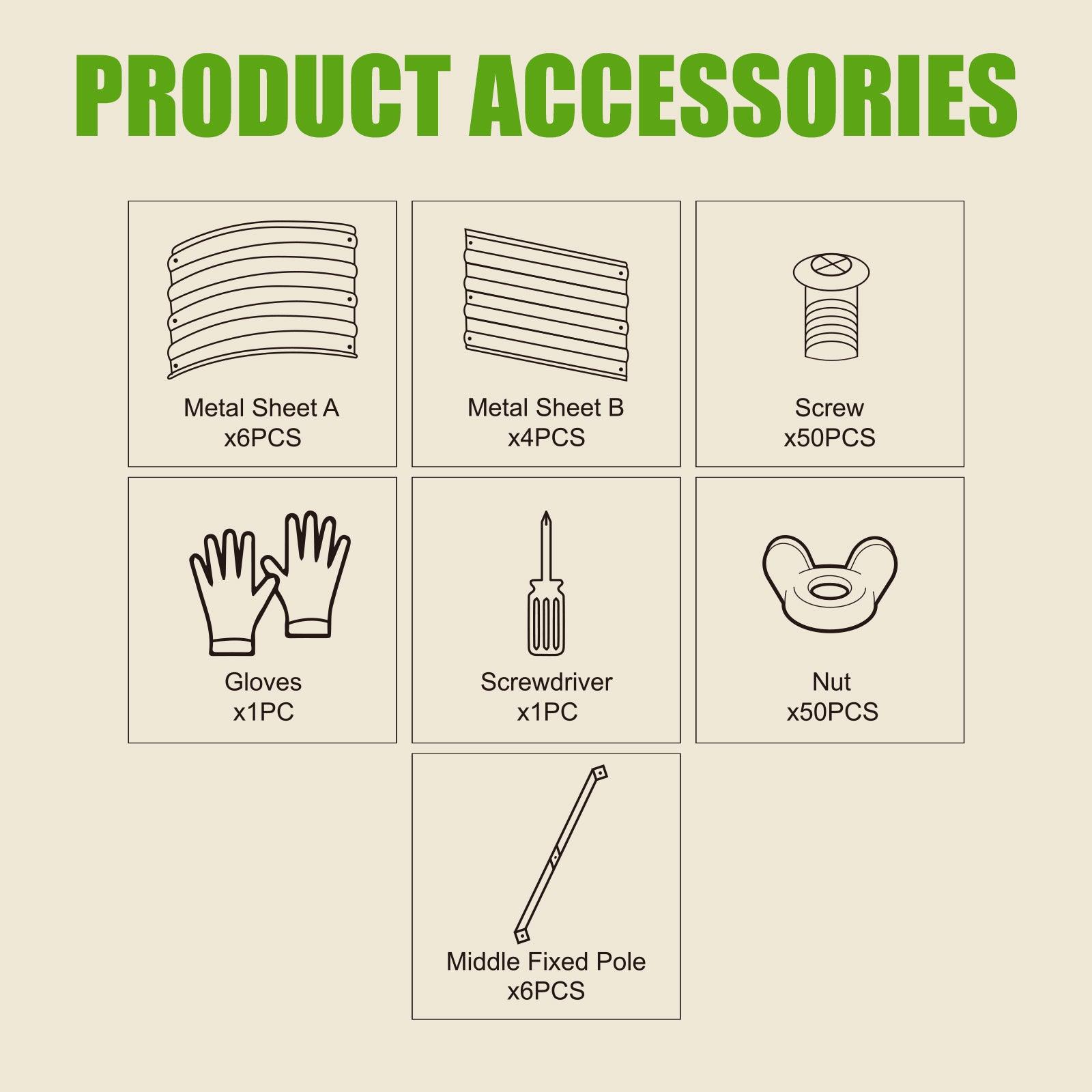
Factors to Consider
Available space and location
Your available space and location play a significant role in determining the best gardening method. Modular raised beds excel in small or irregular spaces, such as patios or balconies. Their compact design allows you to maximize every inch of your garden. You can also customize their layout to fit your space perfectly. For larger areas, traditional gardening offers the depth and spread needed for plants with extensive root systems. Consider sunlight exposure, water access, and topography when deciding. Sloped areas may benefit from modular beds, as they prevent water runoff and soil erosion.
Budget and long-term goals
Your budget and long-term goals should guide your choice. Modular raised beds require an initial investment but offer durability and efficiency. They save time and resources by allowing you to control soil quality and reduce water usage. This makes them a cost-effective option for long-term success. Traditional gardening, on the other hand, is more affordable upfront. It uses native soil and requires fewer materials. However, it may demand more effort and resources over time to maintain soil health and manage pests. Think about your long-term success and how much customization you want in your garden.
Choosing between modular raised garden beds and traditional planting depends on your goals and resources. Modular systems offer flexibility, extended growing seasons, and low-maintenance gardening. Traditional planting connects you to the earth and works well for large plots. Advancements in modular gardening, like smart irrigation and eco-friendly materials, make these systems more efficient and sustainable. Products like SnugNiture raised garden beds reflect these innovations.
The future of gardening looks bright. Eco-optimism is growing, with urban gardening and sustainable practices gaining popularity. Younger generations are leading this shift, embracing methods that require less maintenance and support biodiversity. Assess your space, budget, and vision to find the best fit for your gardening journey.
No comments





0 comments